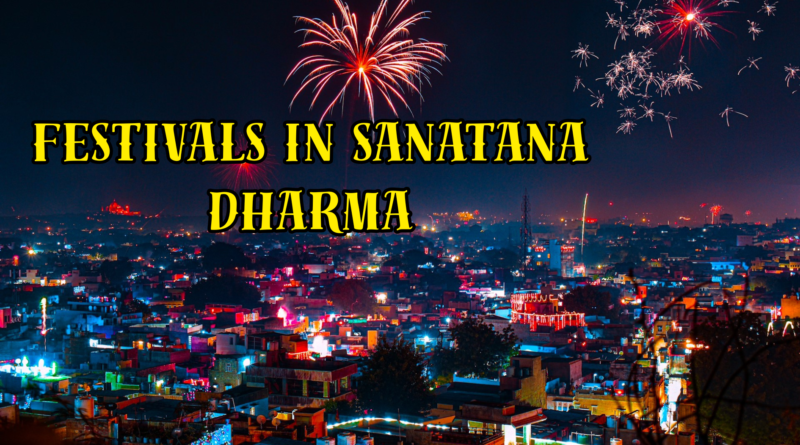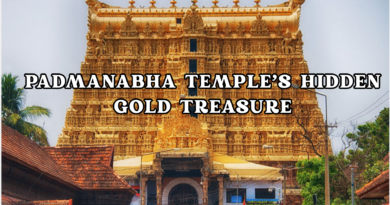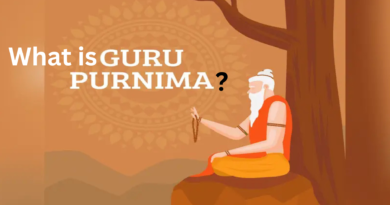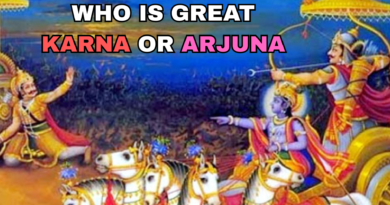FESTIVALS IN SANATANA DHARMA: THE SCIENCE BEHIND THE CELEBRATIONS
Sanatana Dharma, also called Hinduism, is one of the world’s oldest ways of living. It is not just a religion but a complete lifestyle that connects human beings with nature, society, and the universe. One of the most beautiful aspects of Sanatana Dharma is its festivals. These celebrations are not only about worship, rituals, and traditions but also about science, health, and social harmony. Each festival has a deeper meaning that goes beyond prayer-it is a blend of spirituality, culture, and scientific understanding.
Festivals as a Connection to Nature
Sanatana Dharma teaches that nature and humans are deeply connected. Many festivals are aligned with seasonal changes, crop cycles, or astronomical events. For example, Makar Sankranti is celebrated when the Sun moves into Capricorn, marking longer days and the end of winter. Scientifically, this time is important because the body receives more sunlight and Vitamin D, which improves health. Eating til (sesame) and jaggery during this festival is also beneficial, as they keep the body warm and boost energy in cold weather.
Similarly, Holi, the festival of colors, is celebrated at the start of spring. The playful use of natural colors was once designed to protect the skin from seasonal infections and allergies. The bonfire of Holika Dahan before Holi also has a scientific purpose-it purifies the environment and kills harmful bacteria in the air after winter.
Festivals and Mental Health
Festivals are also designed to refresh the human mind. In the busy cycle of life, people need breaks to relax and celebrate. Festivals like Diwali, with its lights and decorations, bring positivity and joy. Lighting lamps has scientific value too—it removes darkness, attracts insects toward the flame, and purifies the surroundings. The sound of crackers, which originally were made with natural ingredients, was meant to drive away harmful pests and insects during the season.
The collective joy of singing, dancing, and celebrating together reduces stress and promotes mental peace. Modern science agrees that happiness and community bonding improve mental health and even boost immunity.
The Role of Food in Festivals
Every festival in Sanatana Dharma comes with special food traditions, and each has health benefits linked to the season. For example:
During Navratri, people fast and eat light, sattvic food like fruits, nuts, and milk. This gives the digestive system a rest after the monsoon season when digestion is weak.
During Diwali, sweets made with ghee and dry fruits are prepared. Ghee provides strength and energy, while dry fruits keep the body warm.
During Onam, a grand vegetarian meal called Onam Sadhya is served on banana leaves. Eating on banana leaves has antibacterial benefits, and the variety of dishes ensures a balanced diet.
These food customs are not random but carefully aligned with health, nutrition, and seasonal needs.
Festivals and Social Unity
Another scientific aspect of festivals is their role in building social unity. Humans are social beings, and loneliness can cause depression and illness. Festivals bring families, neighbors, and communities together. Whether it is Raksha Bandhan, which strengthens the bond between brothers and sisters, or Pongal, where communities gather to celebrate harvest, these occasions ensure human connections remain strong.
Science confirms that social bonding increases feelings of security and belonging, which are essential for emotional well-being.
Energy and Spiritual Science
Sanatana Dharma also believes in energy vibrations. Festivals are designed to raise positive energy in individuals and society. For example:
Chanting mantras during pujas creates sound vibrations that calm the mind and improve focus. Scientific studies show that certain sounds can lower stress levels and regulate brain activity.
Fasting during festivals like Ekadashi gives rest to the digestive system, detoxifies the body, and increases mental clarity.
Dancing and singing during festivals like Garba (Navratri) increase physical activity, improve circulation, and release endorphins, the body’s “happy hormones.”
Astronomical and Cosmic Connections
Festivals also reflect a deep understanding of astronomy. Diwali is celebrated on the darkest night of the lunar month, symbolizing the victory of light over darkness. The lamps and fireworks brighten up the environment when the natural moonlight is at its weakest.
Raksha Bandhan is celebrated on the full moon day of Shravan. The moon’s gravitational pull during full moon days affects the human body and mind, often increasing emotional sensitivity. By tying the sacred thread and strengthening relationships, the festival channels this emotional energy in a positive way.
Environmental Awareness
Sanatana Dharma also connects festivals with care for the environment. Worship of rivers during Chhath Puja, trees during Vata Savitri Vrat, and animals during Govardhan Puja reminds humans to respect all forms of life. This is a scientific approach to sustainability, teaching people that survival is only possible when humans live in harmony with nature.
Conclusion
Festivals in Sanatana Dharma are not just religious events but complete systems of health, happiness, and harmony. They combine spirituality with science, nature with human life, and joy with wisdom. From the food we eat, the songs we sing, the lamps we light, to the fasting we observe—every action has a deeper scientific meaning. These festivals keep society united, promote mental and physical health, and remind us of our connection to the universe.
Thus, the science behind the celebrations shows that Sanatana Dharma is not only about faith but also about living a balanced and meaningful life.




